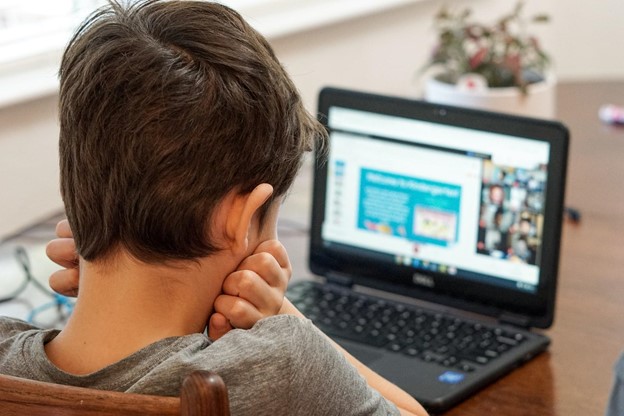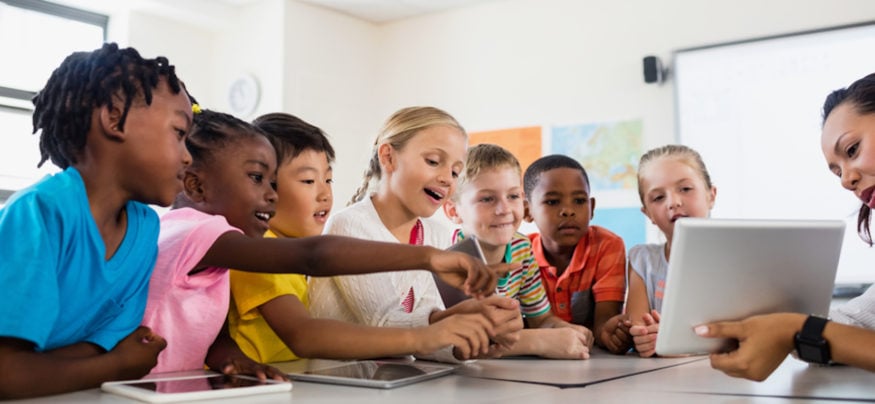COVID-19 presents a unique challenge for any business or institution that typically holds a large number of people. As schools reopen and try to stay open through the waves of the pandemic, technology plays a big role. Whether it's in-person, online or a hybrid model, technology is what makes learning during the pandemic possible.

Integrating In-Person Tech
Schools are a tricky place to reopen. They have countless people — students, teachers, staff and parents — in one place, which is a primary situation to avoid for COVID-19. However, for many topics and majors, learning at home presents challenges. STEM, for instance, requires labs and hands-on work that online learning can't replace.
To aid these needs, schools are becoming resourceful during this time and using technology to get things back up in running in a new way. In fact, in a survey, 93% of teachers stated they are using online instruction to some degree. 50% stated they have been teaching completely online.
First, many schools for all age groups are using contactless temperature taking technology. Whether it's as simple as a thermometer or something more complicated, like thermal cameras, schools are adapting. A thermal camera can read body temperatures and see if students have above-average readings. Then, schools can respond quickly.
Personal protective equipment (PPE) is now a necessity. From disinfectants to sterilizers, schools must have the right PPE tools and resources. For instance, UVC light is a helpful sterilization tool for killing coronavirus-related bacteria. Some schools, like Queen's Grant High School, have installed UV light in the HVAC system to kill bacteria.
Additionally, wearables have come a long way. You can now wear something like the Apple Watch while it monitors your vitals in real-time. Having students use wearables — or any device that can monitor health — helps schools stay on top of outbreaks.
Switching to Remote Learning
Some schools and universities are staying completely online. Others are aiming for a hybrid model, where some students and teachers go in-person and others don't. Regardless, technology is making it all possible from home.
The first thing you'll notice teachers and students using is most likely Zoom. This video conferencing platform took off as a way to connect with friends, family and educators once the pandemic got into full swing back in March and April.
Since then, it's solidified itself as the primary way to teach remotely. Zoom has features like screen sharing, breakout meeting rooms, annotation abilities and a chat box so students and teachers can mimic in-person learning.
Similarly, cloud-based file storage and sharing platforms like Google Drive and Microsoft OneDrive have been invaluable. They let students and teachers send files and documents back and forth instantly. Creating and editing have never been faster. Plus, these platforms save paper!
If a school reopens and must shut down, video chatting and file-sharing will be how to keep learning afloat from home. For teachers, working with online grading systems will be helpful. A platform like GoGuardian lets teachers consolidate grades, attendance and activity all in one place.
Creating a Communication Portal
Whether schools fully reopen and stay open or maintain a hybrid model, a communication portal is necessary. For students, teachers, staff and parents, having a central website that has the latest information about the school's COVID-19 status is imperative.
Students and parents need to know how many cases there are, who the diagnosed student or students came into contact with and what they should do to address the situation. The information should be in real-time, too, with updates as soon as new data emerges. Then, people can receive notifications about important changes as well.
One way to monitor interactions and the spread of the virus is through contact tracing. Big tech companies like Google and Apple have rolled out platforms and apps to alert you if you've come in contact with someone who has COVID-19. Schools should use this technology to prevent an outbreak.
Some schools are even creating their own apps. Duke and Columbia have launched apps related to their campuses and students that help monitor cases within the school. Adapting to technology like contact tracing apps will ultimately be what slows and stops the spread. All this information should be in a communication portal.
A Tech-Based Infrastructure
These steps, whether they're in the classroom, from home or a hybrid model, will help schools get back to learning in efficient ways. Technology is the key to a healthy and safe reopening. With it, students can get the education they need without having to worry about contracting the virus.
Discover more Technological resources with RobotLAB!

Shannon Flynn
Managing Editor - shannon@rehack.com

